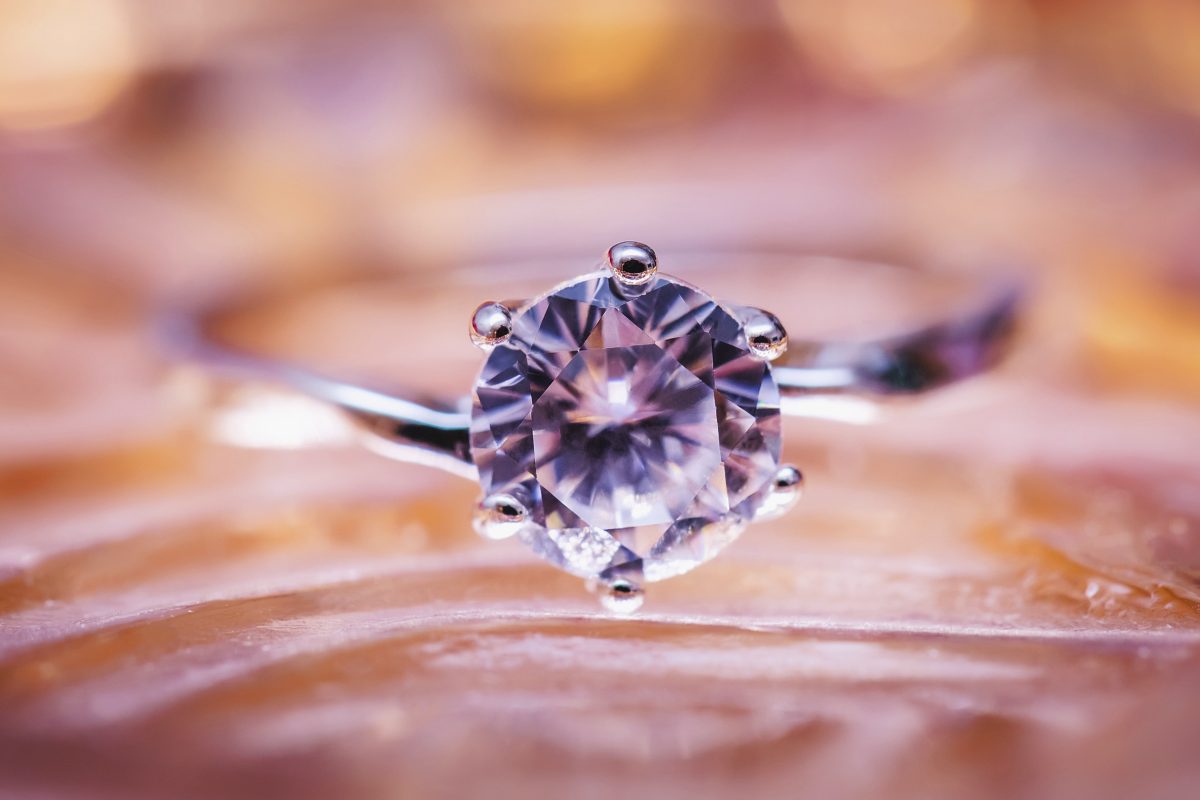Each diamond is unique, a miracle created by time, place and change. The unique quality of each diamond determines its value.
Until the mid-20th century, there was no universally applicable diamond quality rating standard. GIA pioneered today’s industry-recognized diamond grading standards: color, clarity, cut and carat weight. Today, 4C diamond quality standards have become a universal method for evaluating diamond quality. The creation of the diamond 4C standard has two major meanings: a common expression can be used to describe the quality of diamonds, and diamond consumers can accurately understand what kind of diamonds they want to buy.
GIA created the globally-accepted diamond 4C standard and international diamond grading system™, which has become an industry authority and provides consumers with impartial diamond identification information, earning global trust.

Diamond Color
For most gem-quality diamonds, the color identification standard depends on its colorlessness. A diamond with no chemical impurities and a perfect structure is like pure water droplets, which has no color and higher value.
GIA created D-Z’s color grading system to identify the degree of colorlessness by comparing diamonds with colorimetric stones under precisely controlled lighting and observation conditions.
Diamond Clarity
Natural diamond is formed by carbon element under the environment of high temperature and high pressure. And this process has also caused each diamond to have internal features, called “inclusions”, and features on the surface of the diamond are called “surface features.”
The assessment of diamond clarity includes the identification of the number, size, visibility, type, location, and degree of influence on the overall appearance of the above features. Although there are no absolutely flawless natural diamonds in the world, diamonds with higher clarity have higher value.
GIA diamond clarity grades are divided into 6 categories and 11 grades.
The inclusions and surface features of diamonds are usually very small, which can only be seen by professional diamond appraisers. To the naked eye, VS1 diamonds and SI2 diamonds may be exactly the same, but the overall quality is very different. Therefore, professional and accurate clarity identification is very important.
Diamond Cut
The high refractive index creates the brilliant light of the diamond, making it famous all over the world. Many people equate diamond cutting with the shape of a diamond (round, emerald, pear). In fact, the diamond cut grade depends on the result of its facet interacting with light.
From rough to finished diamonds, complex processes and exquisite cutting skills are required. Only the carefully sculpted cutting ratio, symmetry and polishing can perfectly display the unique brilliance of the diamond.
The quality of the cut is critical to the appearance and value of the diamond, and is the most complex and technically demanding standard among the 4C standards.
The GIA cut grading system determines the cut grade of a standard round brilliant diamond (the most common shape on diamond jewelry) in seven steps. The first three steps determine the quality of the diamond’s frontal appearance by detecting brightness, fire and flash. The last four steps evaluate the design and craftsmanship of a diamond by examining the weight ratio, durability, polishing and symmetry.
Brightness
White light reflected from the inside and outside of the diamond.
Fire Color
White light is scattered with colorful spectral colors.
Flash
The flicker produced by a diamond and the form of light and dark areas inside the diamond due to light reflection.
Diamond design and cutting process include weight ratio (diameter weight-diameter relative ratio), diamond waist thickness (which can affect the firmness of diamond), symmetry of facets and polishing quality of each facet.

Diamond cutting is often confused with the shape of the diamond, but cutting refers to the arrangement of the facets of the diamond. The shape refers to the outline of the diamond. The most commonly used diamond shape in jewelry is round, such as standard round brilliant cut diamonds. Other diamond shapes are collectively called fancy cuts. Traditional fancy shapes include horse-eye, pear, oval and octagonal shapes (found in emerald cuts). Squares, cushions (rounded squares), triangles and various other shapes are also becoming more popular in diamond jewelry.
Diamond Carat Weight
Diamond carat weight is a unit used to measure the weight of diamonds. 1 carat equals 200 milligrams.
When measuring the weight of a diamond, 1 carat is equivalent to 100 “minutes”, so that the carat weight is accurate to two decimal places. Jewelers can directly use “points” to describe a diamond weighing less than 1 carat. For example, a 0.25 carat diamond is also called “twenty-five points.” But for diamonds of more than 1 carat, it can only be described by “carats” accurate to the hundredth. For example, a 1.08 carat diamond can only use “1.08 carat” to indicate its weight.
As we all know, the larger the diamond, the higher its rarity. Therefore, the price of diamonds will increase as the carat weight increases. However, even if two diamonds have the same carat weight, their value (and price) may vary greatly. Because the value of diamonds also depends on three other standards in the 4C standard: clarity, color and cut. It is important to remember that the value of a diamond is determined by the color, clarity, cut, and carat weight (the so-called 4C), and cannot be based solely on carat weight.



